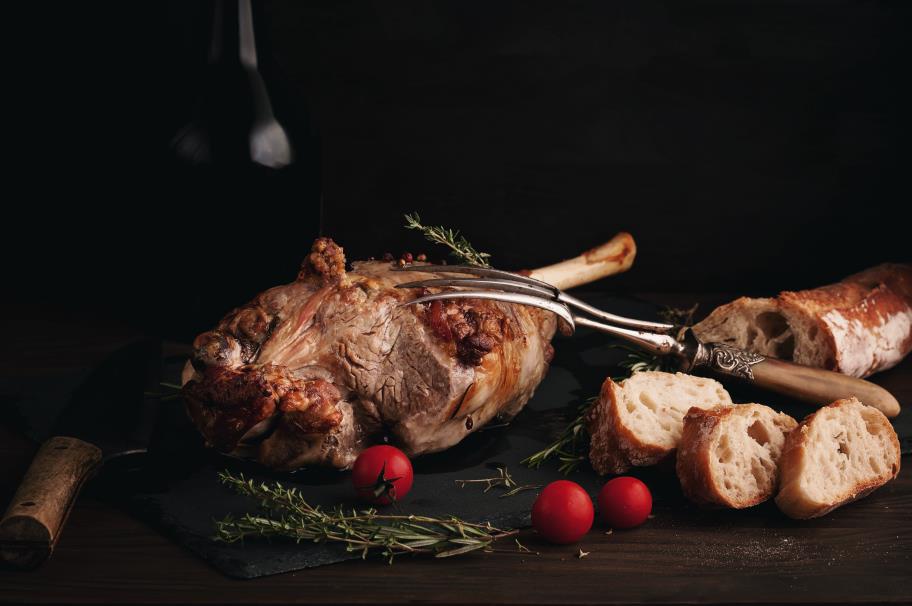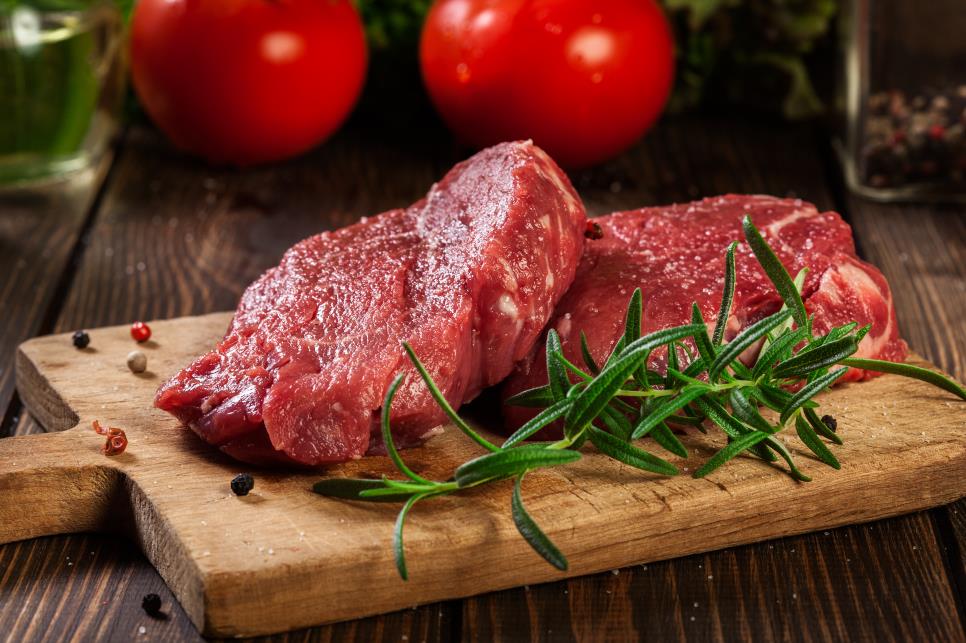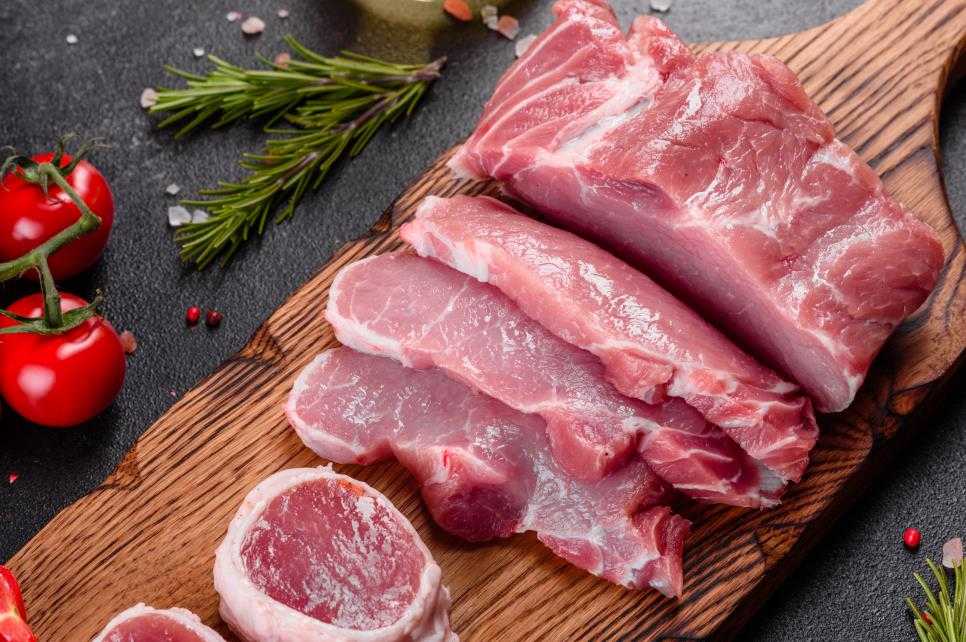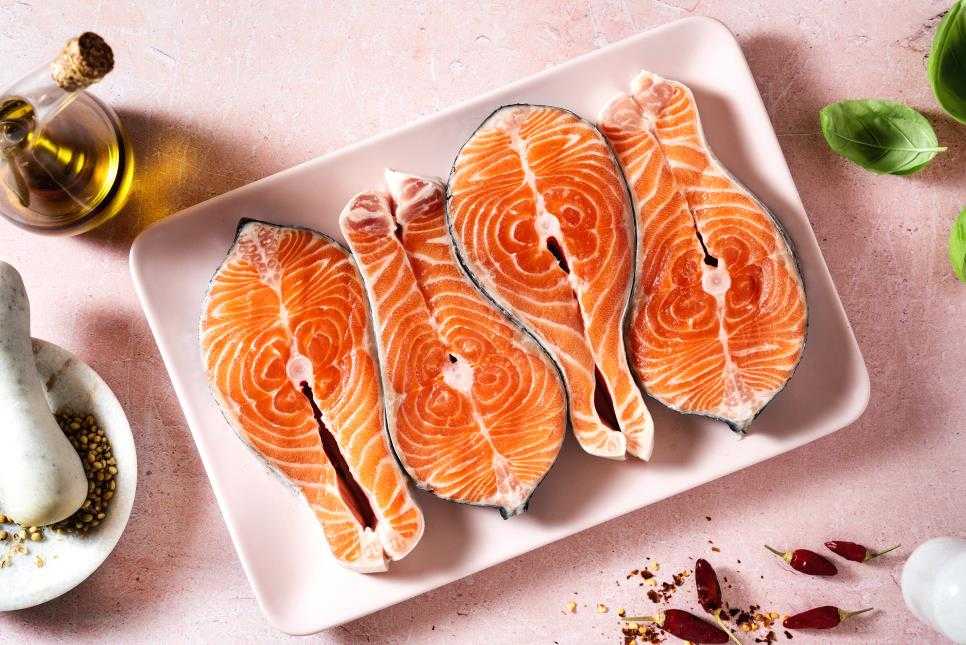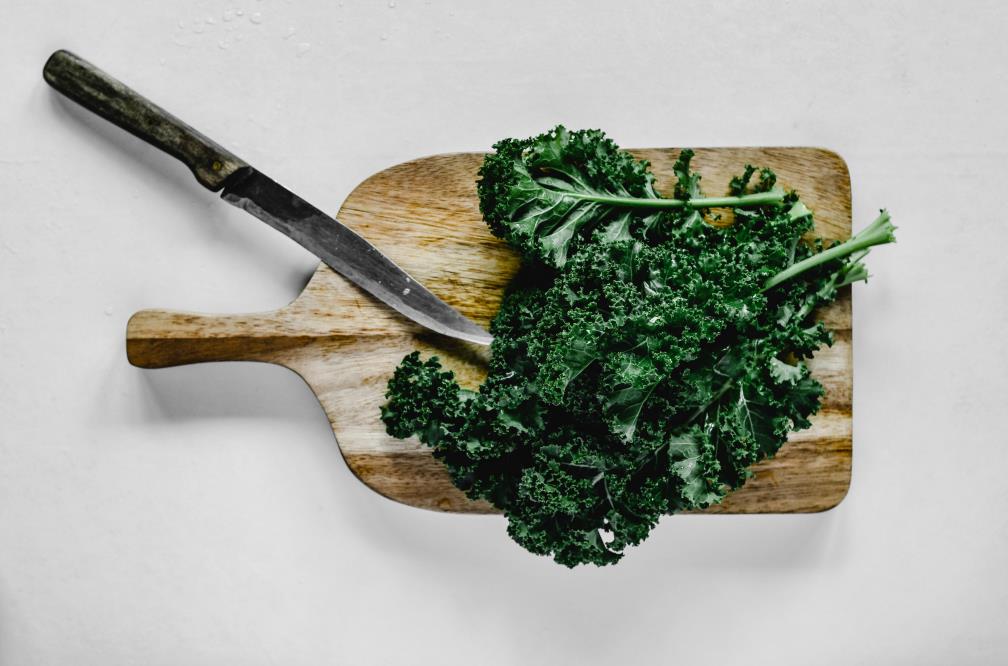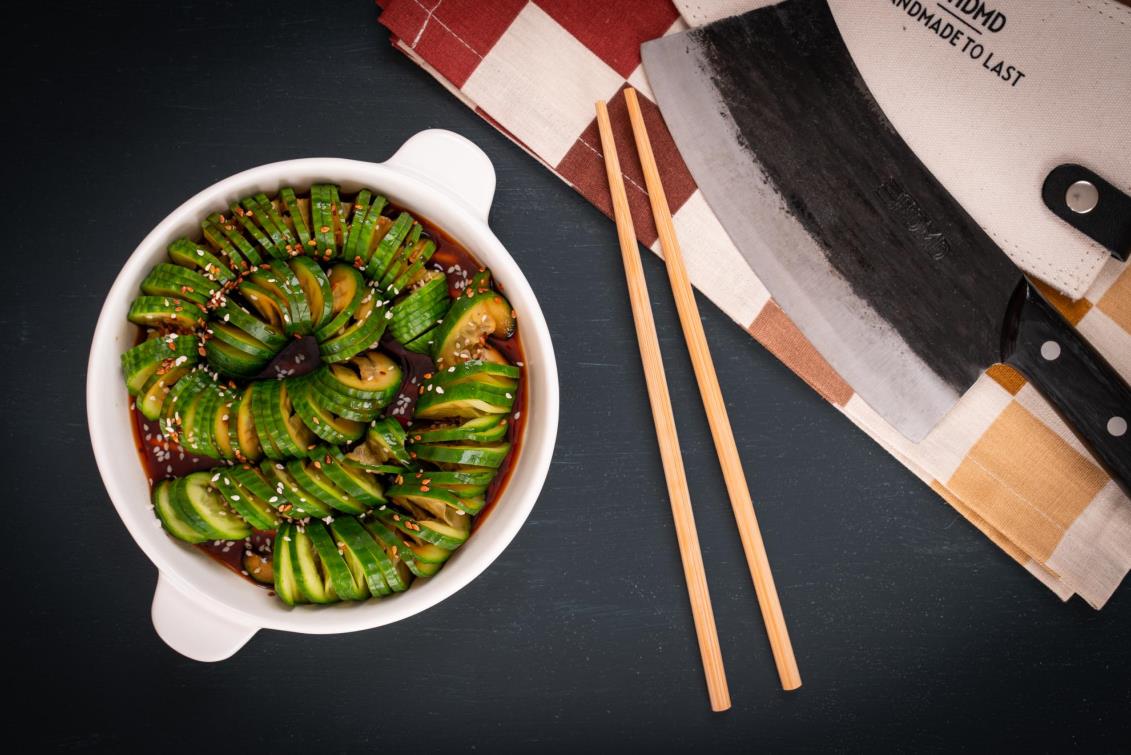Mushrooms are our fungal friends, and they’re not tricky to chop, trim or dice. In this article we’re going to put the fun into mushroom slicing and prep with easy-to-follow instructions on choosing good mushrooms, cleaning, preparation, and cooking/seasoning. We’ve also got some stunning recipes to get your tastebuds dancing!
Table of contents
Preparation
Choosing mushrooms
Depending on where you live, there can be many different varieties of mushrooms to choose from. Here are our pointers on getting a good mushroom regardless of the species:
- Look for firm and plump texture
- Even color
- No damp spots, wetness, or slime
- Dry but not dried up in appearance
- Some dirt on the mushroom is fine
- Buy loose mushrooms if you can, this allows you to pick the best
- If your mushrooms have plastic packaging, it should have holes in the plastic to allow air flow – this prevents botulism
- Mushrooms shrink a lot on cooking – choose small varieties for cooking whole in soups or stews, and large ones for stuffing
- Portion size – for fresh mushrooms you’ll need about 4 ounces per person
Cleaning mushrooms
Fresh mushrooms should only be cleaned as you’re about to use them. Cleaning them in advance will lead to them losing freshness. The recommended way to clean mushrooms without them absorbing any water content is to wipe them off with a cloth/paper towel or alternatively brush them off gently with a soft brush to remove dirt.
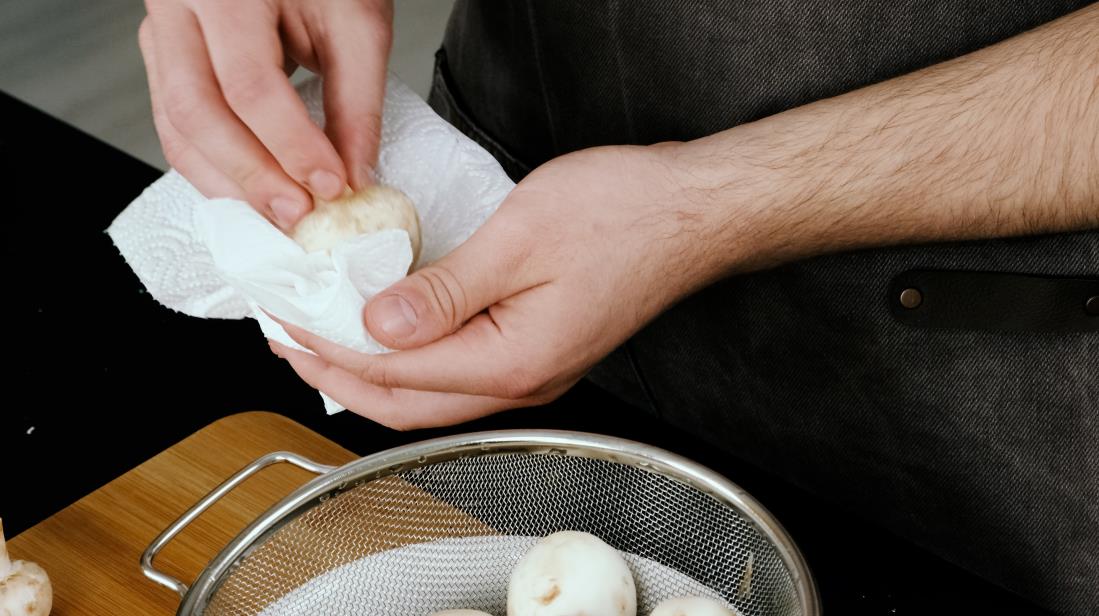
If you’re in a hurry, quick exposure to water isn’t the end of the world with mushrooms, so you can put them into a colander or sieve and quickly spritz them with water from a tap to easily get rid of any dirt.
After rinsing, pat the mushrooms dry gently, or air dry on the counter until you’re going to use them.
Clean dried mushrooms
For dried mushrooms, cover the mushrooms with hot water so that it covers them by about an inch.
Leave them to soak for an hour, then remove the mushrooms from the hot water and keep that hot water, that’s where all the flavor is!
Take the dried mushrooms and rinse them gently under cold running water just to remove any ingrained dirt in the gills, and then pat them dry gently or air dry on the counter until you’re ready to use them.
Preparing tools
For slicing, dicing, and chopping your mushrooms you’ll need the following tools:
- A sharp knife – we recommend a utility knife but a chef’s knife or paring knife can also be used. A utility knife is a good medium sized tool with a blade of 5 or 6 inches, perfect for mushrooms, but use what you have available and what feels comfortable in your hand. A non – serrated blade is best to avoid damaging the delicate mushroom flesh
- A chopping/cutting board or firm surface that you can cut on
- A bowl for putting the chopped mushrooms into
- A small sealable container for offcuts and remnants you’d like to use or freeze later
Handpicked for you
True cutting power in the palm of your hand
How to quarter mushrooms
Quartered mushrooms are perfect to be Sautéed or roasted, and served in a big plate. The size of quartered mushrooms provide a meaty, chewy mouthful that make them excellent as a savory side dish.
Step 1. Trim the stems. Balance the mushroom cap on its side and cut straight down through the top of stem, where it goes into the mushroom. This will sever the stem from the mushroom without damaging the cap, and you can put it aside.
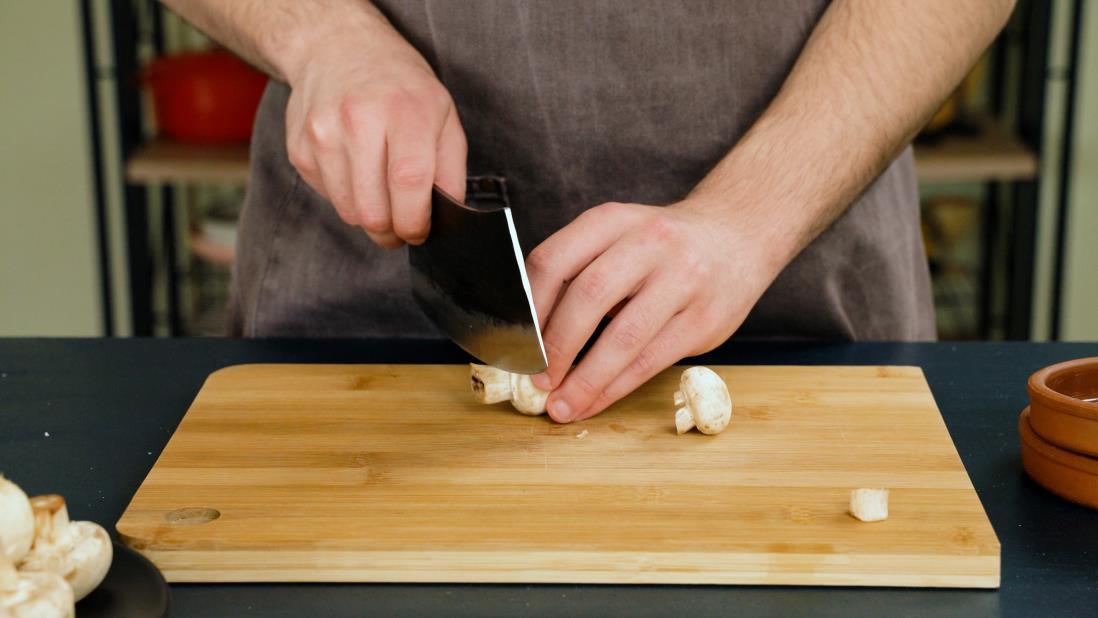
Step 2. Cut in quarter. Simply cut the mushroom at the middle of the cap in half, then cut in another direction in half again.
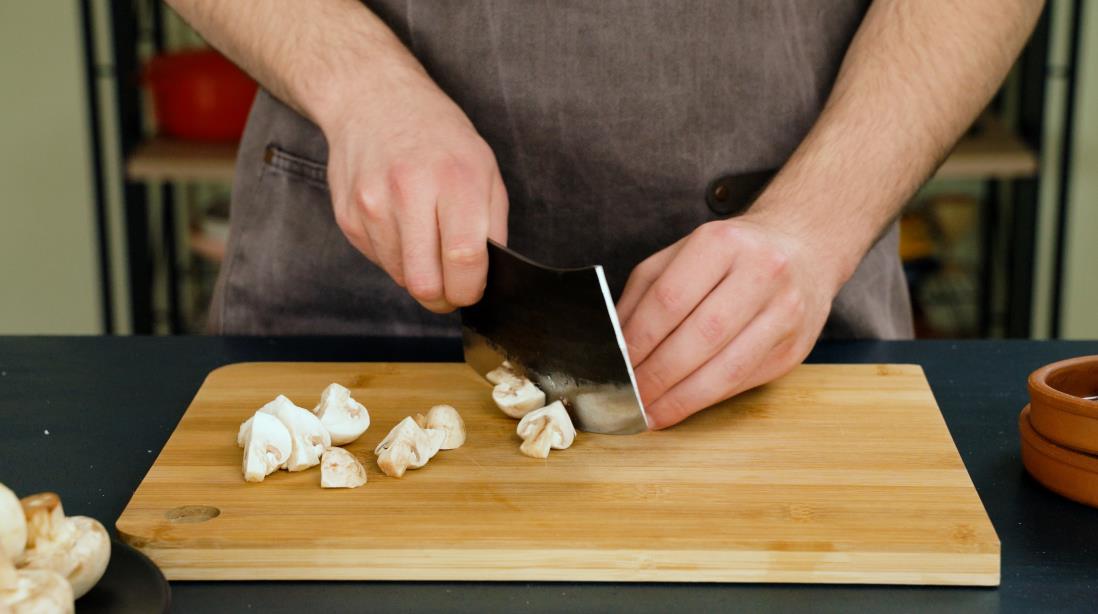
How to slice mushrooms
Mushroom slices are the most common form of mushroom in the culinary word. You’ll find them on top of pizza, in pasta, on soup, etc.
Step 1. Trim the stems. Place your mushrooms sideaways and use your knife to cut the stems off. It’s the same procedure when quartering the mushrooms.
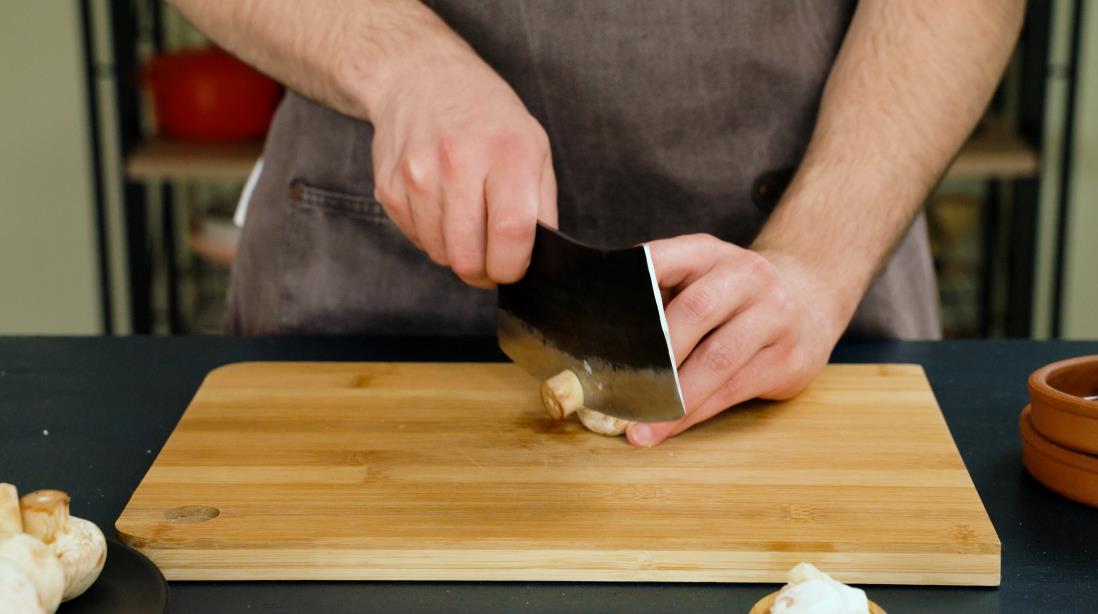
Step 2. Slice the mushroom into even pieces. Once the stems are removed, take a mushroom and place it cap side down on your cutting surface – the ‘gills’ of the mushroom will be facing downwards. Now, holding it gently but firmly with your fingers so that it doesn’t move, slice with your knife through the mushroom cap widthways, making the gaps between the slices as big or small as you like. Small gaps will give you fine slices, whereas bigger gaps mean chunkier slices. Always chop bigger than you need to allow for shrinkage during cooking!
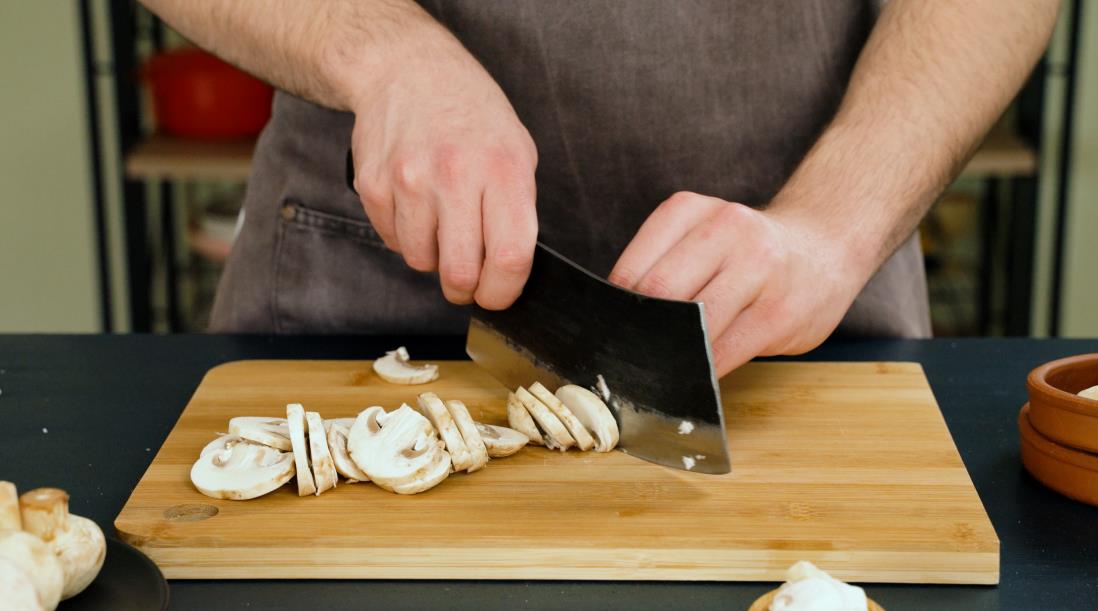
Pro tip
Mushrooms stems are wonderful, they’re both high in fiber and high in flavor. Instead of discarding them, consider using them chopped as part of the mushroom in your next dish. Alternatively, keep your mushroom stems in the freezer for quick and easy use in soups, stews, and stocks.
Chopping/dicing mushrooms
To cut mushrooms into little blocks or dice is another interesting way to serve them and is often done for dishes like omelets, or perhaps for topping a pizza or savory pastry.
Here’s how:
Step 1. Trim the stem. We will use a different method this time. Simply grip the base of the mushroom stem firmly and twist it while pulling it off, it will come off easily.
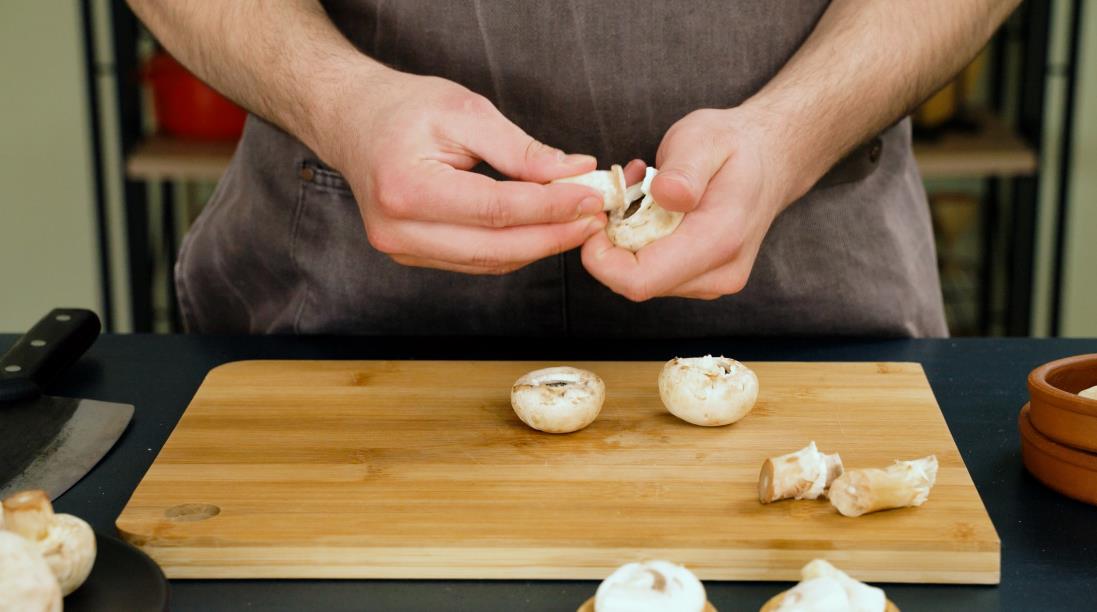
Step 2. Slice the mushroom, cut them into smaller pieces. Once you’ve sliced your mushrooms into slices as above, stack the slices and rotate the pile 90 degrees. Now chop across the mushrooms again, this will give you dice or cubes of mushroom. You can chop the blocks of mushrooms as chunky or as small as you like, depending on what you’re using them for.
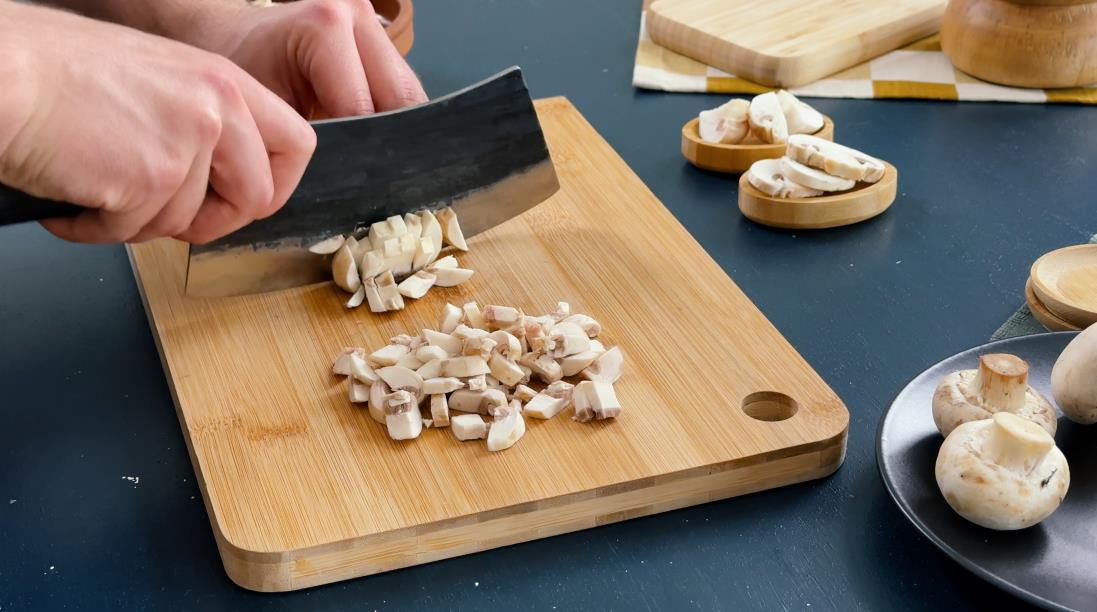
Step 3. Mince mushrooms. For minced mushrooms, you’re going to cut the blocks VERY fine, so that you end up with tiny blocks. This will mean cutting across the mushroom flesh from different directions to give a fine texture.
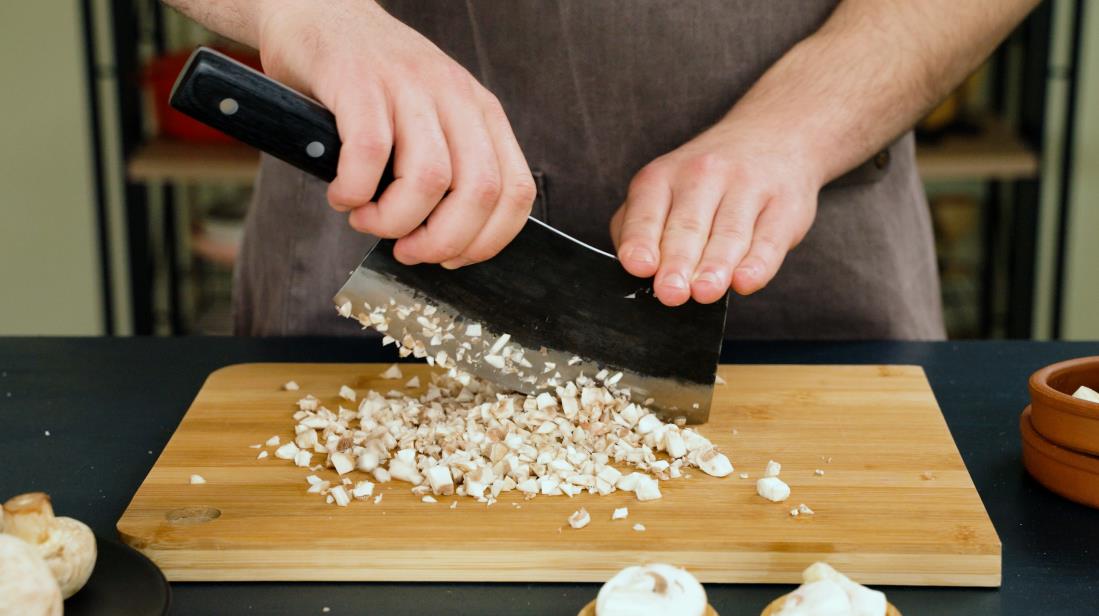
Seasoning your mushrooms for cooking
Many herbs, spices and seasoning liquids pair beautifully with mushrooms and here are some suggestions for you to try:
- Garlic
- Black and white pepper
- Lemon
- Ginger
- Chili – either dried or fresh
- Coriander/Cilantro
- Sage, rosemary, thyme, oregano, and dill
- Parsley – parsley butters take mushrooms to the next level
When to season mushrooms
Herbs and other seasonings can be used throughout the cooking process for mushrooms, you season as you see fit! However, salt should be added only at the end of the cooking process. Why?
Salt leaches moisture from mushrooms as they cook, meaning that instead of frying or roasting nicely along, they’ll be sitting in and steaming in their own liquid, which is not the texture that you want. Prevent this problem and preserve their firmness and flavor by only salting the mushrooms right before serving.
Get the best out of your mushrooms with these gorgeous recipes!
Slow cooker lentil and mushroom bolognese
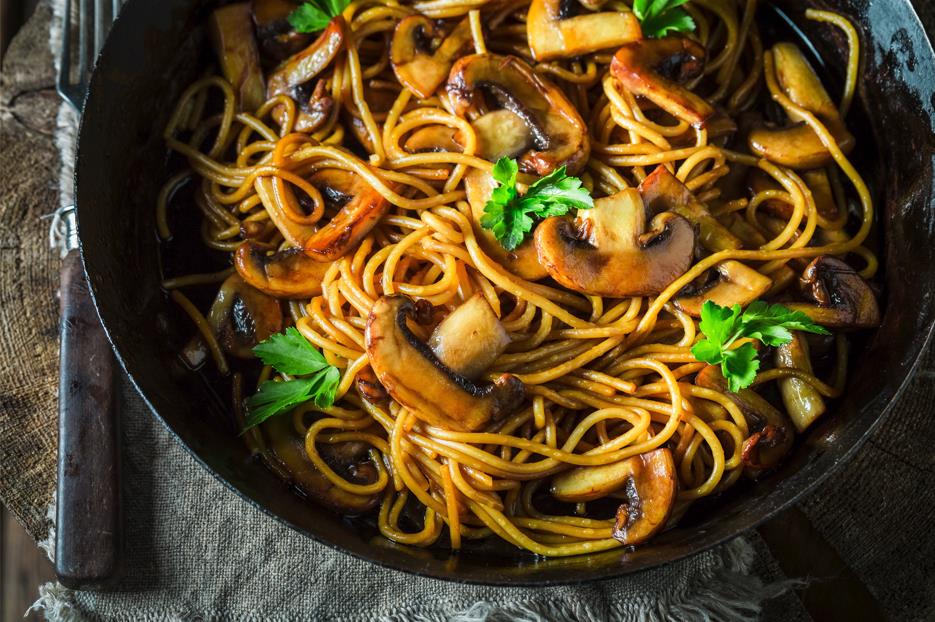
This vegetarian dish packs a ‘meaty’ punch with mushrooms and protein rich lentils. As well as being a healthy meal, you won’t even miss the meat in this recipe. This sauce goes beautifully over long pastas like spaghetti or tagliatelle. Get your chopped ingredients into the slow cooker, and let your slow cooker do the work for you, there’s no fussing or stirring. This is a super – rich recipe that fills you up on cold fall or winter days!
Link to the recipe from The Kitchn.
Mushroom, manchego & almond risotto
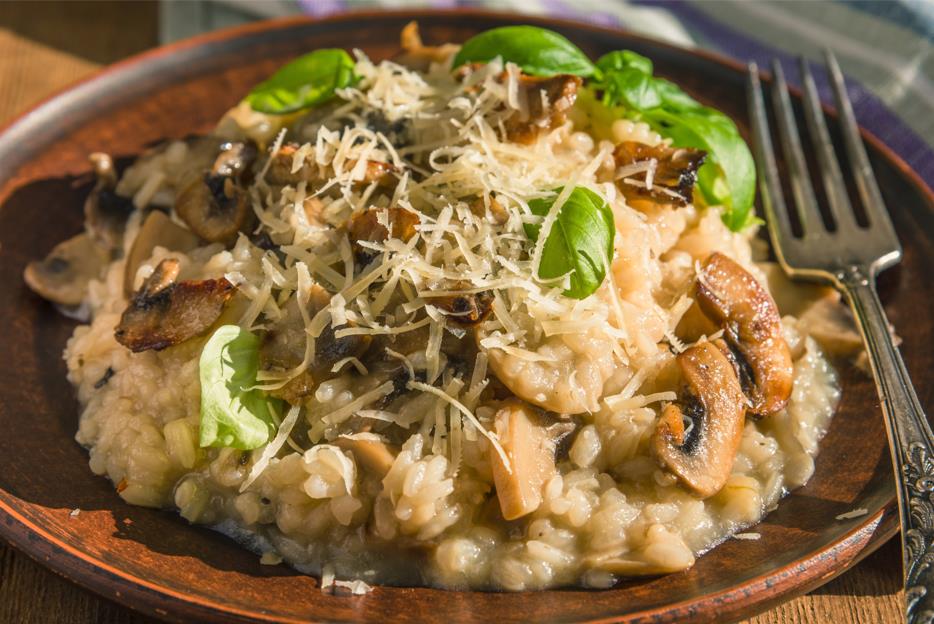
This is a quick and easy 25 – minute stand by for those midweek days. You’re not sacrificing any taste or ‘wow!’ factor here either, it’s as pretty as a picture and a real bowl of comfort when you need earthy flavors the most. This dish pairs beautifully with a crisp white wine.
Link to the recipe from The Kittchen.
Let’s also look at some common questions readers have about mushrooms. You’ll find some FAQs for your reference below –
Mushrooms FAQs
Are mushroom stems poisonous?
That depends. If you’re buying mushrooms in a shop or from a reputable online retailer for eating, every part of the mushroom should be edible because it’s sold for human consumption.
On the other hand, any foraged or hand – picked mushroom carries with it the threat of toxicity. You should NEVER eat ANY part of a mushroom that you have found outdoors unless you are an expert forager or mycologist and sure about your identification of the species and that it’s safe to eat.
What are some signs that a mushroom is poisonous?
Any mushroom/fungus found in the wild can be poisonous so you must exercise great caution. Common signs of toxicity are red or orange markings, white gills, a skirt or ring on the stem, or a bulbous/rounded base. Never eat any mushroom unless you are 100% sure it is safe to eat.
Is including mushrooms in my diet ecologically friendly?
Absolutely! Mushrooms are eminently sustainable and grow in composting waste from other agricultural sectors, meaning they use what’s already there to produce even more food. If farmed ethically, mushrooms are one of the most ecologically friendly foods that you can eat.
In conclusion
Here at HDMD we’ve so enjoyed this look at mushrooms. They’re one of Nature’s superfoods and so good for the environment to boot. As an ingredient in the kitchen, nobody can deny the awesome yum of garlicky mushrooms on wheaten toast or an oozy egg omelet crowned with browned and pan sticky mushrooms.
We’ve shown you how to choose, chop, slice, and dice our fungal friends and included some recipes that we’d love you to try out. Until next time, we hope you’ll be eating mush more mushrooms!







